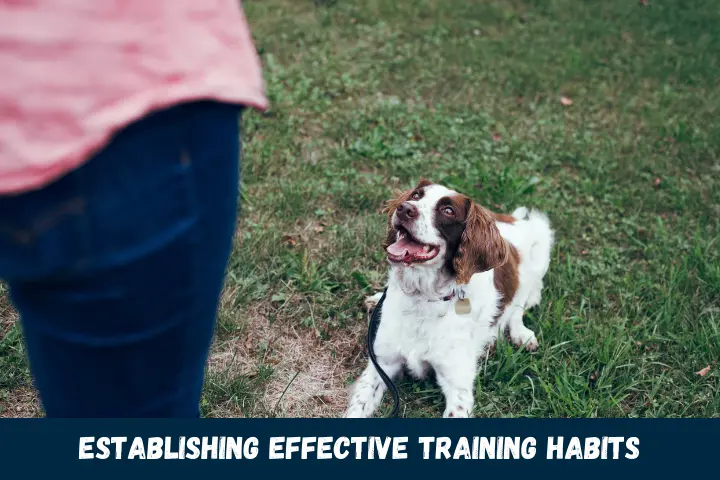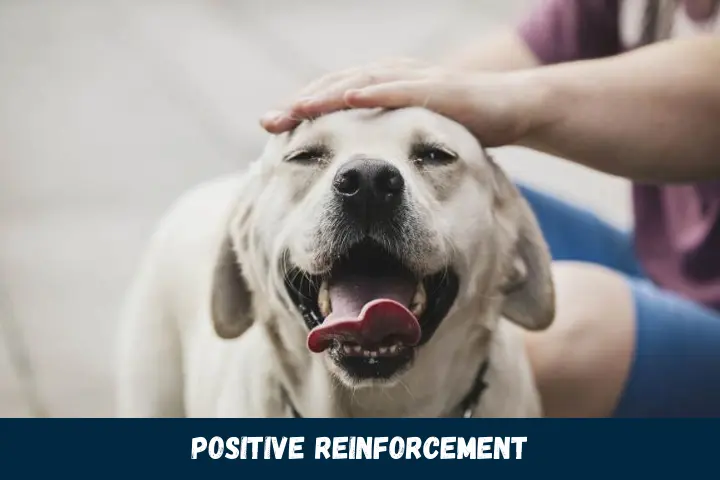The cheerful yip of your pup upon your arrival home. An enthusiastic announcement of the mail carrier’s daily delivery. An alert call cascades across the yard when a neighbor passes by. For dogs, barking is a natural form of canine communication and expression. But left unchecked, barking can quickly escalate from reasonable to excessive, disrupting households, annoying neighbors, and creating stress for both pets and their people.
The good news? With patience, compassion, and constructive solutions, it’s possible to curb troublesome barking and restore peace and harmony to your home. This guide covers the fundamentals of effective dog training, outlines common barking causes, and provides tailored strategies to transform noisy nuisances into settled serene pups. Soon, the only barks you’ll hear will be reasonable “hellos” and expressions of pure puppy joy. Explore how to train a dog effectively for a quieter and more enjoyable living experience.
Establishing Effective Training Habits

Before diving into anti-barking tactics specifically, let’s review some foundational dog training habits that set the stage for learning new skills and behaviors:
Positive Reinforcement

The most effective modern dog training methods rely on positive reinforcement, which simply means rewarding desired behaviors so they increase in frequency. This encourages cooperation from your dog and strengthens your bond in the process. Proper rewards are things your individual dog finds motivating. Food treats work well for most dogs – break them into pea-sized bits for training. Verbal praise or petting can also be effective rewards.
Prevent Rehearsal of Unwanted Behaviors

If your dog tends to bark in certain recurrent situations, try to preempt the behavior before it starts by redirecting them or removing the stimulus. The more a dog rehearses an undesirable behavior, the more engrained it becomes. Save your dog’s practice energy for good habits instead!
Set Your Dog Up for Success

Dogs learn best when set up for success in manageable steps. Asking for too much too soon in difficult environments can set your dog up to fail. Train foundational impulse control skills inside initially, then gradually work up to more challenging real-world situations.
Record Keeping
Track triggers, distractions, and training highs and lows. Understanding context helps refine your approach. Plus, written records make progress more visible.
Understanding Common Barking Triggers
Before choosing solutions, determine the underlying cause. Common triggers include:
Boredom/Lack of Mental Stimulation
Insufficient physical and mental exercise leads to pent-up energy and frustration.
Loneliness/Separation Anxiety
Distress from isolation can prompt attention-seeking barking behavior. Fearful dogs may panic when left alone.
Barrier Frustration
Visual access but no physical access to things like critters, guests, and other dogs prompts frenzied barking.
Greeting/Visitor Excitement
Enthusiastic barking when people arrive or during play can become over aroused.
External Noises/Sights
Trash trucks, passing dogs, unfamiliar noises, and visual stimuli near the home generate alert barking.
Medical Issues
Discomfort, illness, and cognitive decline can prompt excessive vocalizations.
Tailored Solutions for Different Bark Triggers
With root causes for unwanted barking identified, targeted solutions can help reorient specific troublesome triggers.
Boredom Barking Solutions
Prevent boredom by providing sufficient physical and mental stimulation. Daily walks and play sessions drain energy while games, training sessions, and food puzzles engage the mind. Rotate high-interest toys to keep things exciting. Consider doggy daycare if you are gone for long hours, incorporating effective strategies on how to train a dog to walk and maintain a balanced and fulfilled lifestyle.
Separation Anxiety Solutions
Consult professionals for anxiety. In the meantime, provide comforts like soothing music, durable chews, and familiar bedding when departing. Don’t overly coddle upon returning, which can reinforce angst. Instead, greet calmly and resume normal routines, implementing effective strategies on how to calm a dog down.
Barrier Frustration Solutions
Block visual access to triggers with solid barriers or frosted window film. Teach an alternative trained behavior using positive reinforcement instead of reactive barking. For example, place a mat in front of the window and reward for lying quietly on it.
Visitor Barking Solutions
Teach a place command designating a specific spot where your dog should settle upon guest arrival. Reward quiet behavior profusely. Mute initial greetings by asking guests to avoid eye contact and high-pitched vocalizations.
Environmental Noise Solutions
Use white noise machines to buffer alarming external sounds. Distract with food puzzles and chew toys when distracting ambient noise occurs. Teach relaxation techniques like mat work.
Medical Barking Solutions

Schedule a veterinary visit to rule out pain, inflammation, infections, parasites, skin conditions, and arthritis which can prompt barking. Senior dogs may bark disorientation from canine cognitive dysfunction. Consult your vet.
Consistency and Patience Are Cornerstones of Progress
Curbing excessive vocalizations takes diligent consistency and ample patience. Progress won’t happen overnight. Stick with the fundamentals of prevention, reinforcement of quiet calm behavior, and managing triggers with compassion. Maintain realistic expectations, celebrate small successes, and remember change is a process, applicable to training even calm dog breeds.
Essential Tools for Quieting Canine Chaos
In addition to tailored trigger solutions, several tools can assist in anti-bark training:
Calming Supplements and Pheromones

Consult your vet before using over-the-counter calming aids. This help take the edge off while implementing behavior modification.
Noise Machines
Soothing white noise masks outdoor sounds. Place near favored barking posts.
Interactive Toys
Rotate puzzle toys, kungs stuffed with enticing fillings, and treat balls to fulfill mental exercise needs.
Verbal Markers
Use distinct verbal cues like “enough” or “quiet” to pinpoint exact moments of undesirable barking then praise subsequent silence.
Head Halter
This mesh muzzle alternative enables more control over the mouth/noise-making mechanism without pain or intimidation.
Remember, quick fixes like shock, spray, and vibration anti-bark collars risk eroding trust without addressing the root causes long term. Always prioritize reinforcement of desirable calm behavior over corrections for reacting.
General Training to Supplement Anti-Bark Efforts

While tailored solutions target specific bark triggers, consistent general training fosters better impulse control, attention, and environmental awareness. Practice these skills daily:
- Eye Contact/Focus Cues
- Relaxation Commands Like Mat Work
- Impulse Control Games
- Name Recognition
- Dog to Sit and Down Commands
These basic obedience and composure skills bolster mental stamina, allowing your dog to cope with potential triggers appropriately instead of reacting with problematic barking. Formal training classes are excellent for socialization and skill development.
Pandemic Puppy Pitfalls
Puppies adopted during COVID shutdowns often lack critical socialization experiences. Set them up for success by intentionally exposing them to sights, sounds, surfaces, and smells in a controlled positive way. Well-rounded exposure prevents reactivity rooted in fear later on.
Managing setbacks
Despite your best efforts, some days will face setbacks with an influx of barking. Instead of frustration, rest peacefully. Revisit prevention habits, doubles down on reinforcing silence, and reassess environmental management. Stick with solutions a minimum of 2-3 weeks before expecting visible progress.
Lifestyle Integration for Lasting Improvements
To achieve lasting improvements beyond temporary bandages, integrate training into daily life not just isolated practice sessions. Incorporate mini-training interludes while washing dishes or folding laundry. End walks on a manners note with some obedience work. Integrate regular puzzles and chews into your routine. Make training exercises part of your lifestyle together.
Professional Support
If barking persists despite diligent effort, seek professional guidance. Certified behavior experts offer tailored modification plans, address psychological undertones like anxiety and fear, and provide accountability. Some trainers even offer board and train programs allowing respite during the intervention process.
Medical Intervention
As a last resort if behavioral solutions prove ineffective and barking markedly impacts quality of life, your veterinarian may recommend medications to help take the edge off while continuing behavior work. Only pursue this option under veterinary supervision.
A Commitment to Compassion and Understanding

Curbing bothersome barking requires diligence and endurance, but the payoff is a settled companion and a more harmonious household. Maintain realistic expectations, focus on progress not perfection, celebrate small milestones, and stay committed to solutions compassionately. Channel challenges into opportunities to understand your dog better while strengthening your bond built on trust and patience. Explore insights from How to Train A Dog to Stay.
Preserving the Positive Nuances
While minimizing excessive barking is important, don’t eliminate vocal expression altogether. Occasional “hellos,” play soliciting and attention-getting are healthy displays of doggy dialogue. Allow these reasonable vocal exchanges in context while curbing overzealous noise.
Beyond Barking: Practicing Holistic Wellness
Meeting needs for sufficient exercise, mental stimulation, veterinary care, and nutritional fuel are just as pivotal as behavioral interventions for long-term harmony. Strive for holistic wellness to help your dog reach their highest potential as a canine good citizen.
Respecting Your Neighbor’s Experience
While implementing solutions at home, remain courteous to neighbors in the interim. Bring peace offerings, share progress reports, and
Respecting Your Neighbor’s Experience
While implementing solutions at home, remain courteous to neighbors in the interim. Bring peace offerings, share progress reports, and provide reasonable solutions if barking becomes disruptive. Reassure them you are actively working to resolve the issue compassionately. Most will appreciate transparency and good faith efforts.
Know Your Legal Rights and Responsibilities

Excessive and uncontrolled barking violates many residential noise ordinances. Some regions mandate abstraction after warnings. Be proactive in your training efforts to avoid legal complications down the road.
When to Seek Specialized Help
Despite diligent effort over an extended timeframe, some dogs’ barking issues resist improvement. This may suggest underlying psychological triggers like debilitating anxiety requiring medications and specialized behavior modification plans. In these grave cases, don’t hesitate to recruit the guidance of veterinary behaviorists or specialized trainers.
Final Thoughts
Curtailing barking frequency often occurs gradually – expect ups and downs. But celebrate small training milestones like moments of quiet or days without desk-diving noise sprees. Marking improvements keeps morale high which leads to better results long term.
Remember, be realistic in your expectations, actively prevent rehearsal of reactiveness, address root causes with compassion, and intentionally reinforce desired calm behaviors. Do this while integrating focused training efforts into your lifestyle together. Stay the course, get professional help if needed, and maintain realistic milestones. Soon, the comfortable quiet will be its own reward!




